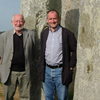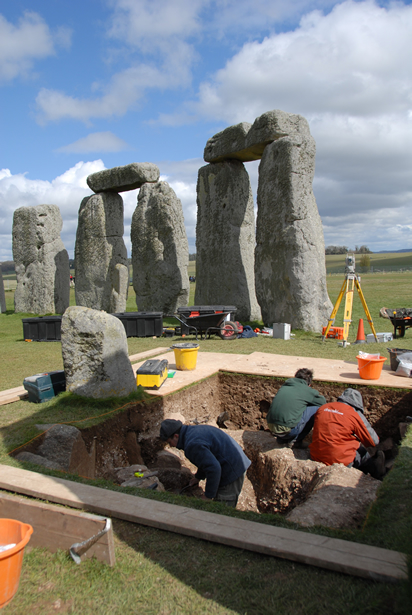
 |
Public Lecture to Reveal Secrets of Stonehenge |
A public lecture by Professors Timothy Darvill and Geoffrey Wainwright, hosted by Bournemouth University in association with the Prehistoric Society, to given on the 12th November 2008 at the Talbot Campus.

On Wednesday, 12 November, Professor Timothy Darvill, of BU, and Professor Geoffrey Wainwright, President of the President of the Society of Antiquaries of London, will share the results of their excavation during a public lecture, hosted by Bournemouth University in association with the Prehistoric Society, entitled ‘Stonehenge Excavations 2008: Secrets Revealed’.
Admission to the lecture, at 6.00pm on the Talbot Campus, is free of charge. Refreshments (tea and coffee) will be available beforehand from 5.15pm in the Atrium of Poole House. You can email bulecturers@bournemouth.ac.uk in advance with confirmation of your attendance.
Professors Darvill and Wainwright are the world’s foremost experts on Stonehenge having spent a combined 70 years-plus between them studying the monument and its surrounding landscape.
From late March to mid-April this year, Professors Darvill and Wainwright led a group of experts as part of the Stonehenge Bluestone Project, to determine when the first double bluestone circle that formed the original Stonehenge was constructed.
Their excavation – the first allowed within the stones for over 40 years - focused on the oldest part of Stonehenge, the original bluestone circle. Professor Darvill and Wainwright believe the bluestones were revered as healing stones which became the key reason they were transported some 250 km from the Preseli Hills in west Wales to Wiltshire. It was the magical qualities of these stones which transformed the monument and made it into a place of pilgrimage for the sick and injured of the Neolithic world.
“All of the evidence reinforces the idea that whatever the purpose of Stonehenge might have been – and there could well be more than one – the bluestones were central to it,” continues Professor Darvill. “Their meaning and importance to prehistoric people was sufficiently powerful to warrant the investment of time, effort, and resources to move the bluestones from the Preseli Hills to the Wessex Downs.
“When we look back over the results of that relatively tiny area, it’s hard to imagine that we could actually have got so much out of such a small area,” says Professor Darvill. “We’ve actually managed to re-write whole sections of Stonehenge’s history from those very small excavations.”
The excavation was facilitated by English Heritage following the granting of Scheduled Monument Consent by the Secretary of State for Culture, Media and Sport.
Funding for the excavation and post-excavation analysis was provided by BBC ‘Timewatch’ programme in association with the Smithsonian Network in the US. The resulting documentary, ‘Stonehenge Deciphered’, aired on both the BBC and the Smithsonian Channel in late September.
10/11/08